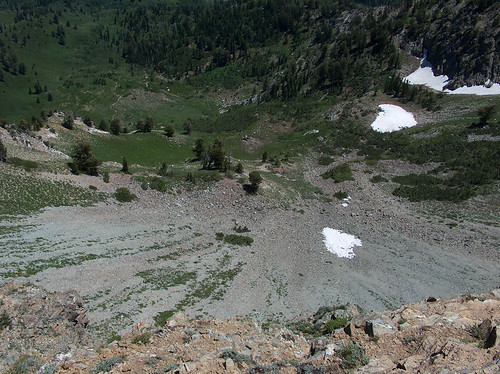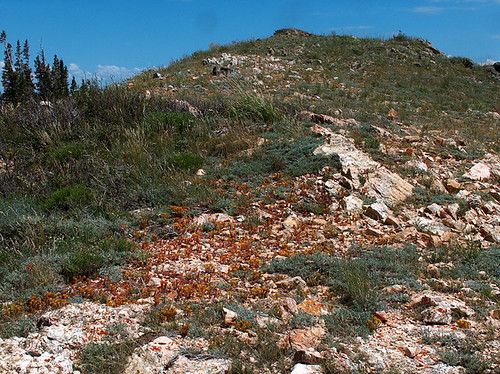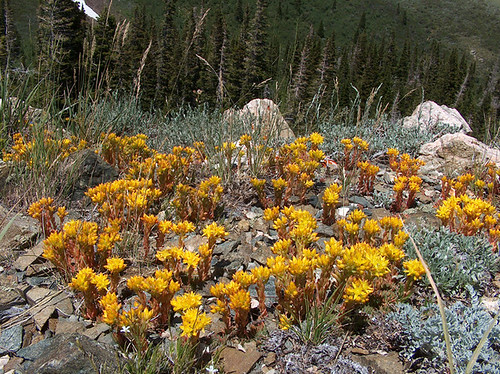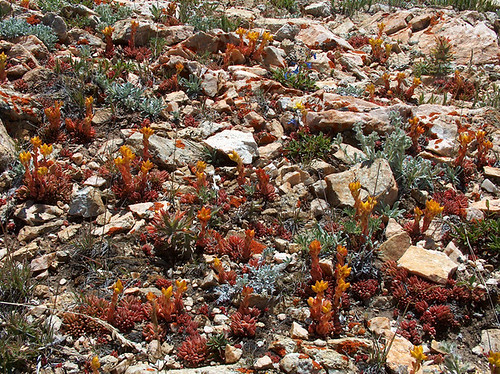Does adding a particular rock, such as limestone or granite, actually alter the planting medium of a trough in the near term? I define the 'near term' as a couple of years. Mikkelson posted a question about the potential benefits of adding serpentine to one of his troughs, and it struck me that I had no idea what, if any, effect, a particular kind of mineral/rock would have on the soil over a few years. I know that grinding up limestone or using limestone or tufa dust in a particular soil mix will effect the PH, but will just regular rock?
Comments
Re: Adding Rock To Troughs
Well, this happens extremely slowly in most cases! "Years" might be interpreted more literally as decades or longer, and the release of minerals or compounds may be in trace amounts!
Re: Adding Rock To Troughs
Yes, maybe decades are better, especially in dry climate, but I do see rocks disintegrate in a few years. It happens in my garden! The small, hard mineral crystals fall apart when the "glue" washes away.
Re: Adding Rock To Troughs (Back to the serpentine rock story)
I should have updated the thread that I started awhile back regarding this subject. The situation was that I have an Eriogonum siskiyouensis that looked as though it was hungry for some type of nutrient(s), having yellow leaves with the yellow increasing month by month. I went to http://www.eriogonum.org and looked through the gallery of photos. It was easily seen that the yellowing was not typical of the species. I Googled "serpentine rock" and discovered that one of the images matched a rock that I had in a trough. Serpentine is soft and usually green. I took a pocket knife a scraped off about a teaspoonful and mixed it into the soil. Within two weeks I could see a difference. The Eriogonum siskiyouensis is now a beautiful gray/green with some winter reds.
The links to the four images below are a rock outcrop to the east of where I live. The hill, about 9000' elevation (2745 m) is a steep climb from the west. At the edge of the serpentine ridge there is a straight down drop of about 1000 feet (305 m) within a few footsteps. The Sedum lanceolatum is found exclusively on these ridges and rock outcrops in the area. These "mass plantings" are a stunning sight.
Below is a link to the basics of serpentine outcrops and the plants that are sometimes endemic to particular serpentine rock outcrops.
http://www.fs.fed.us/wildflowers/communities/serpentines/communities/roc...
Happy Sowing,
James :)
Re: Adding Rock To Troughs
I find the reaction of your E. siskiyouensis to the addition of serpentine dust to be very interesting. I'm glad to hear it worked.
I have moved several Eriogonums into my garden, that are restricted to habitats with specific soil compositions. I always wonder if they truly require the same substrait. So far I have not run into any problems.
Re: Adding Rock To Troughs
The Eriogonum siskiyouensis is the only one that I have had any slight difficulty with. I agree that the majority of plants, especially seed grown, don't mind at all the different soils that they grow in.
Re: Adding Rock To Troughs
At the edge of the serpentine ridge there is a straight down drop of about 1000 feet (305 m) within a few footsteps. The Sedum lanceolatum is found exclusively on these ridges and rock outcrops in the area.
Below is a link to the basics of serpentine outcrops and the plants that are sometimes endemic to particular serpentine rock outcrops.
That's a terrific spot, James! It's intriguing that Sedum lanceolatum is tied to serpentinite outcrops there. I wonder what that's about? Here, it is widespread and occurs on the sedimentary rock substrates (limestone, various sandstones and conglomerates, shales) that are ubiquitous.
Re: Sedum lanceolatum and serpentine ridges
Yes, Lori, I agree that it is a terrific spot! I visit the area several times during summer to get out of the heat in the valley. There's always a another spot that is new to me especially on both sides the ridge that separates the east facing steep slope and the more gentle west facing slope. 
And here's a look of one of the steepest drops in the area:
I dug a piece of the sedum two years ago and put it in a trough of more nutrient dense alpine soil than the soil from where it came. After having it two years in the trough it has been very, very well behaved and takes up no more space than it did two years ago. Since so many sedums run rampant in in troughs or the open garden, it great to have a sedum that I don't have to keep an eye on every week of the growing season.
Happy Sowing and Germination,
James
Re: Adding Rock To Troughs
Super images of a beautiful spot, James ... many thanks for posting.
Re: Adding Rock To Troughs
James,
Amazing terrain!! :o Fascinating. Thanks for showing us your area.




All kind of rocks either small or large, are breaking down and releasing minerals to the environment. What kind of minerals released depends of the kind of rock, of course. This is natural processes and include physical, chemical and biological weathering.
Biological weathering includes plant root activity. Plant roots produce H+-ions (hydrons) that they change with other cations like Ca2+, K+ and Mg2+. They change anions with OH- (hydroxide) respectively. The plant roots (and moss and lichen) litterally tear down the rocks minerals.
All this change the soil quality over the years.